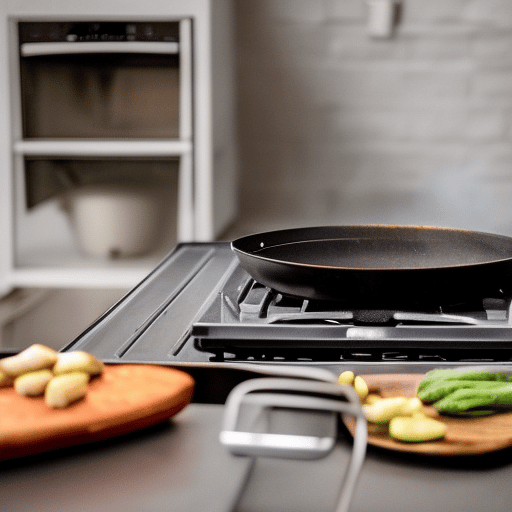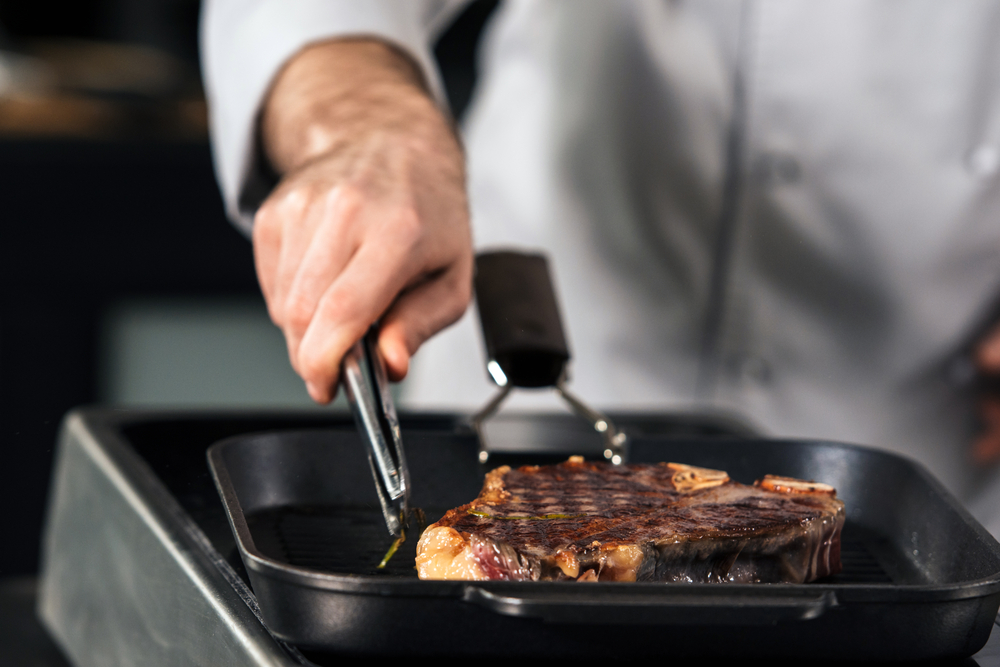Learning how to use a griddle pan can be an excellent way to upgrade your everyday cooking experience. Though not as common in the kitchen as your standard frying pan or skillet, the griddle pan is an excellent investment for anyone who loves the smoky flavour of grilled foods.
Griddle pans are unique in their ability to leave grill marks on your food without the need for the extremely high heat of an outside grill. So, if you love the taste of outdoor cooking yet don’t want to deal with the unpredictable weather outside, then a cast iron grill pan could be just the product you need. But, of course, before discovering the benefits of grill pans for yourself, you need to learn how to use them correctly.
The good news?& A cast iron grill pan is an incredibly versatile kitchen product, which you can enjoy using for all kinds of meals once you get the hang of finding the right heat. Here’s your guide on how to use a griddle pan effectively.
Using a Griddle Pan: Choosing the Right Pan
The first step in learning how to use a griddle pan effectively is knowing what you need. Like the trusty frying pan, your grill pan can come in various shapes and styles. The most popular option for many professionals is a cast iron griddle pan. A cast-iron pan is more likely to produce the kind of smoky flavour you’re looking for than a non-iron pan.
When looking at cast iron griddle pans, think about how versatile you need the product to be. Some cast-iron pans allow you to place your grill pan in the oven after using it on a glass top stove. Others require an open flame on your hob to work correctly.
For the best results, look for cast iron grill pans made in a square or rectangular shape so that you can use as much of the space as possible. Although you’ll brush oil in your pan before cooking in it, it might also be a good idea to choose a pan with a non-stick surface.
How to Cook With a Griddle Pan: Seasoning Your Cookware
In many ways, cooking chicken, vegetables, and meats in a cast iron griddle pan isn’t that different from cooking in a regular frying pan. However, you’ll need to watch your ingredients closely to ensure the food cooks properly with both products. You can also use medium heat or medium-high heat, depending on what you want to cook.
A griddle pan can feature grooves in the bottom to help leave grill marks on your food. There are also flat grill pans which can be helpful for cooking pancakes, seafood, and even eggs. Before cooking with your griddle pan, make sure you coat the button of the pan with cooking oil or melted butter. Generally, if you’re cooking meat, you’ll want to use an oil with a high smoking temperature, like peanut oil or avocado oil, rather than vegetable oil or olive oil.
Take the time to season the pan before you begin cooking food. This means you add a thin layer of oil to the entire surface of the pan and then heat it on a gas stove. This helps create a non-stick surface, so you don’t get burnt food stuck to your pan. Once again, try to avoid oil with a low smoking point unless you want very smoky cooking.
Cooking on Your Griddle Pan
Whether you want to cook chicken with an outdoor grilling flavour or add sear marks to your burgers, griddle pans can be fun. However, remember that cooking with ridged pans is different from cooking on smooth surfaces. The raised edges will cook parts of your food faster than others, so check your ingredients regularly to see when they’re ready.
When you’re ready to cook, heat your pan on medium or medium-high heat until the pan is hot enough to sear the outside of the food you’re cooking quickly. It shouldn’t take long for your food to cook if your pan is hot enough. You can even grill the outside of your food and then place the meal inside the oven if you choose a pan that’s oven safe.
Allow the food to cook on both sides for a few minutes, flipping meats and vegetables to make sure you’re cooking them properly on both sides. If you’re cooking more than one steak or burger on your griddle to get those great char marks, make sure there’s a decent gap between each piece of meat. It’s also worth practising how long you need to cook certain foods.
For instance, if you want a medium-rare steak, you’ll only need to cook the steak very briefly on both sides. If your meat starts to stick to the deep ridges, you can add oil to help lift it. Once you’ve finished cooking, clean your griddle immediately by eliminating any black residue or burnt food with hot water. Allow the griddle to cool, then wipe it down with a paper towel.
After cleaning your griddle pan, you can season it again to keep it in great condition for the next time you use it. You can also cover the pan in aluminium foil to keep it safe between uses.
Tips for Cooking With a Griddle Pan

Like cooking with any utensil or appliance, getting the most out of your griddle pan can take some practice. If you want to get the best results, you need to be willing to experiment with your cooking times to see what works best. Here are some quick tips to help you cook better meals straight from your griddle or grill pan:
Let the Pan Heat up Properly First
You shouldn’t be cooking food for extended periods on a griddle pan. The purpose of this pan is to sear and grill your food quickly. With that in mind, let the entire surface of the pan heat up for a couple of minutes before you add your meat or veg onto it.
Space the Food Out
Avoid placing too many pieces of food next to each other in the pan, as this can make it harder to flip your food and stop items from sticking together. It’s easier to work with your pan when it’s not overcrowded. All the parts of your pan should be equally hot, so spread things out.
Don’t Turn the Food Too Soon
While it’s worth keeping an eye on your food when using a griddle pan, you shouldn’t turn meats and other items over too quickly. Early flipping means the sear marks won’t be visible, and you might not get the smoky finish you’re looking for.
Clean Correctly After Each Use
Whether you’re making full steaks or grilled cheese sandwiches, it’s important to clean your cast iron grill pan properly every time you use it. Wash the pan with hot water and scrub carefully to remove burned food. Please wait for the pan to cool down before you wash it thoroughly.
Season Your Pan
After drying your pan each time you clean it, apply a little oil to re-season the surface. This should lead to better results the next time you cook. Store your pan in a dry location to avoid rust.
What Kind of Food Can You Cook on a Griddle?

The grill pan is a versatile product suitable for cooking a wide range of foods. Although some foods you might cook on this pan might seem unhealthy, like burgers and bacon, it’s much better to cook these products in a grill pan than in a frying pan.
The grooves in your standard grill pan will help drain grease and fat when you’re cooking, so you don’t have to worry about these ingredients soaking into your food. You can also make your grill pan even healthier by using oils like avocado or peanuts rather than vegetable or olive oils.
There are all kinds of foods you can cook on a griddle pan, including:
• Breakfast foods: Flat grill pans are excellent for cooking eggs, omelettes, pancakes, and hashbrowns – all perfect for breakfast meals. You can also cook delicious sausages and bacon in a grill pan or grill up some avocado for a healthier meal.
• Sandwiches: Grill a sandwich for a unique flavour. A grill pan is ideal for a grilled cheese sandwich or a last-minute panini if you’re looking for a quick lunch.
• Burgers and BBQ foods: All the foods you would usually cook on an outside grill are wonderfully well-suited to a grill pan. Consider trying out some delicious burgers.
Grill pans are a great investment when you know how to use them properly. Now go and have some fun!
Using a Griddle Pan
Now you know how to use a griddle pan properly, you can make the most of it! We all have so many kitchen utensils in our homes that we don’t think about how we can use them to their maximum potential.
Now it’s time to get in the kitchen and start creating!

